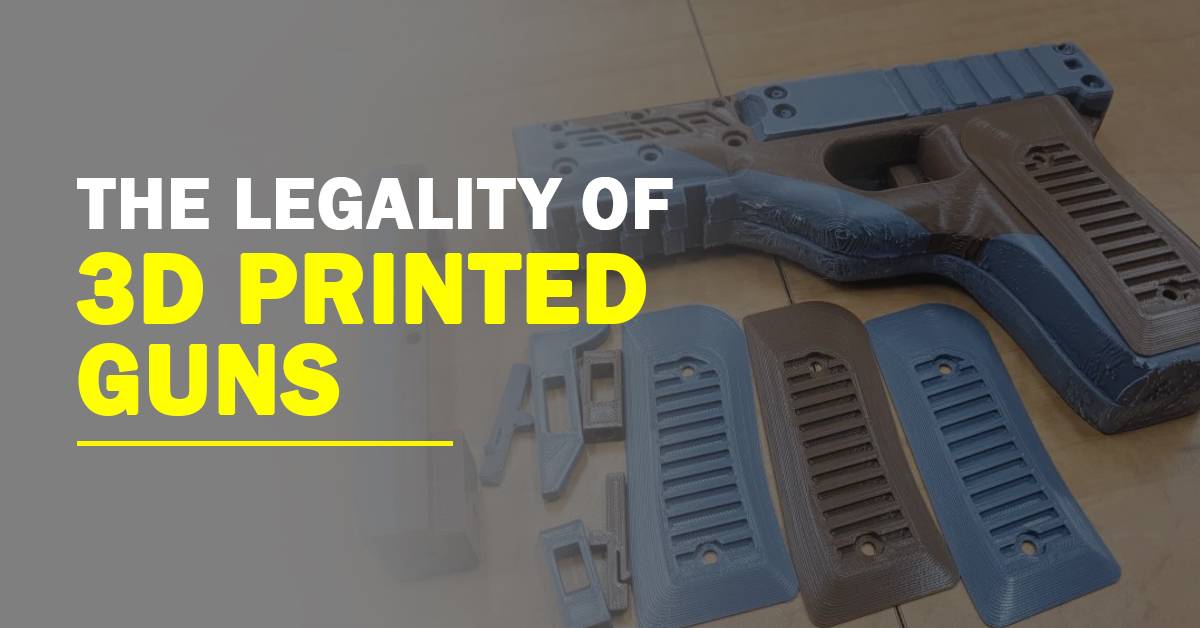Table of Contents
ToggleIntroduction
The rapid advancement of 3D printing technology has brought forth both innovative possibilities and complex legal challenges in recent years. Among the controversial discussions surrounding 3D printing, the topic of 3D printed guns has gained significant attention in today’s time. This blog aims to shed light on the legal status of 3D-printed guns worldwide, exploring the diverse approaches and regulations implemented by different countries on Earth for human welfare.
Also Read: How To Make A 3D Printed Keychain
United States Of America
The United States holds a unique position in the discussion of 3D-printed guns due to its constitutional protection of the right to bear arms as it is the strongest and most powerful nation in the world. While traditional firearms are heavily regulated, the legal landscape surrounding 3D-printed guns remains complex in the United States Of America. In the United States Of America, the debate primarily revolves around free speech and Second Amendment rights in their country. While federal law prohibits the manufacture and possession of undetectable firearms, the legality of 3D-printed guns is subject to ongoing legal battles and varying state-level regulations as per the constitution of the U.S.A nation.
European Union Or Arab Countries
In the European Union (EU) or the group of Arab countries i.e. League of Arab States, the regulations surrounding 3D printed guns are primarily governed by the Firearms Directive. The directive generally classifies 3D-printed guns as firearms, subjecting them to stringent regulations similar to traditional firearms in their constitution. Member states of the League of Arab States have implemented different approaches, with some prohibiting the possession and production of 3D-printed guns altogether, while others apply existing firearms laws to regulate them.
United Kingdom or Britain/ England
The constitution of the United Kingdom has enacted strict gun control laws, and 3D printed guns are treated no differently. The possession, manufacture, and distribution of 3D-printed firearms are illegal in England. Authorities monitor and enforce these regulations to prevent the proliferation of untraceable and potentially dangerous weapons to maintain social and public peace inside the nation’s premises. It also denotes the positive key element of the constitution of the UK in front of the world and maintains security in the country.
Australia
Australia has implemented stringent firearm regulations due to a mass shooting incident in the year 1996. The country strictly prohibits the possession and production of 3D printed firearms, categorizing them under the same laws as traditional firearms to maintain security and law inside the country. Stringent licensing requirements and regulations aim to maintain public safety and prevent the misuse of such weapons through the government authorities only.
Japan
Japan is renowned for its strict gun control laws, and the regulations extend to 3D printed guns around the world. The production, possession, and distribution of 3D printed firearms are strictly prohibited, in line with the country’s comprehensive firearms regulations to maintain law and order inside the country premises. Authorities actively enforce these laws to maintain public safety and prevent the illegal use of firearms for ensuring public safety.
Other Countries
The regulations regarding 3D printed guns vary across the globe as every nation is independent have worked according to their respective adopted constitutions or laws. Some countries, such as Germany, France, and Canada, have implemented strict regulations as per their laws, considering 3D-printed guns as firearms subject to existing laws. In contrast, countries like Russia and Brazil have specific regulations governing the production and possession of 3D-printed firearms.
Conclusion
The legality of 3D printed guns is a multifaceted and evolving topic in the world. As technology continues to advance, governments worldwide are grappling with the challenges it presents. While some countries have implemented strict regulations and treated 3D-printed guns on par with traditional firearms, others are still navigating the legal landscape according to human welfare. It is essential for policymakers to strike a balance between protecting public safety and addressing the potential risks associated with 3D printed guns, while also considering the broader implications for technology, free speech, and individual rights in accordance with the constitution or laws implemented by the respective countries.







